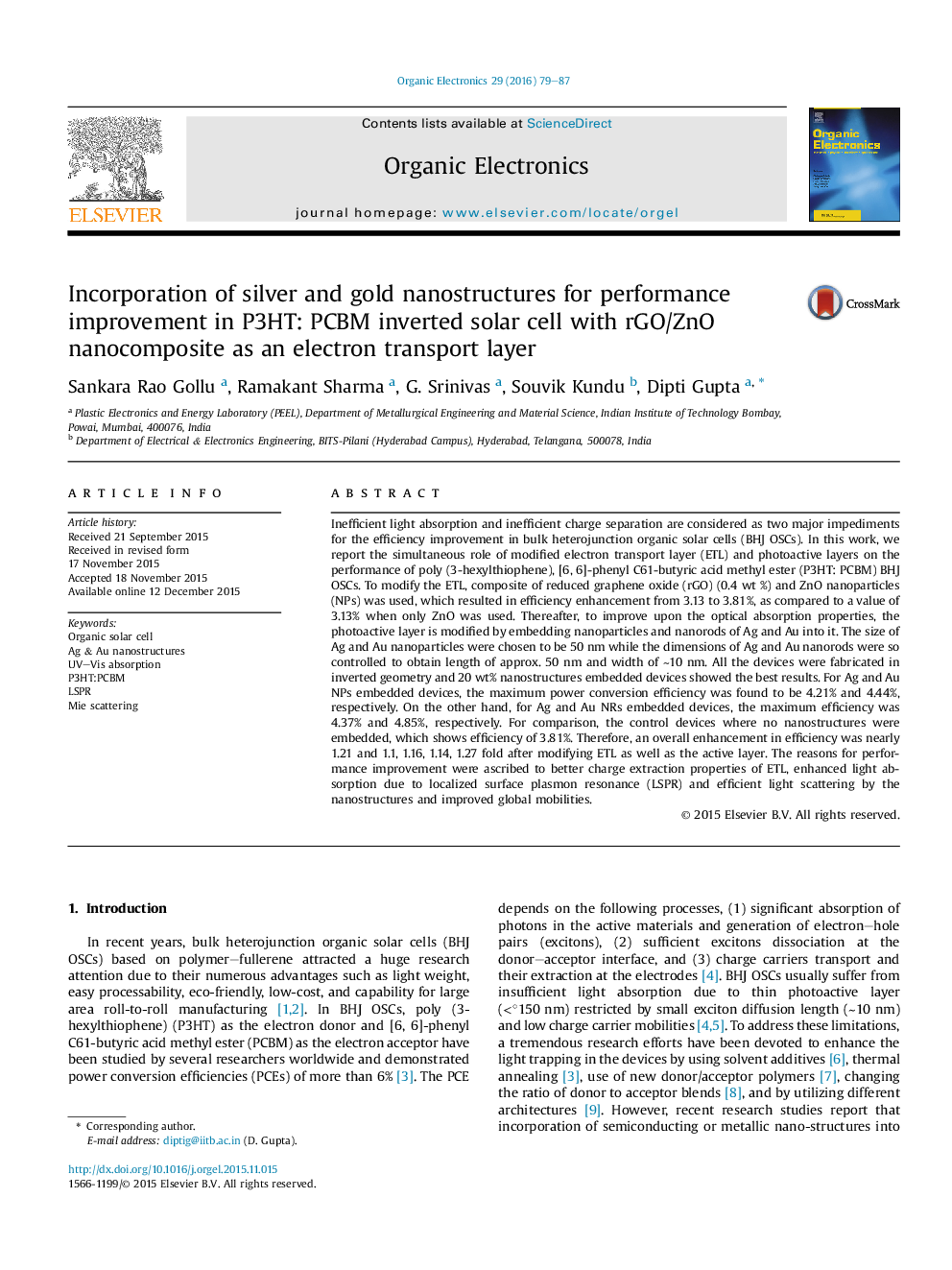| کد مقاله | کد نشریه | سال انتشار | مقاله انگلیسی | نسخه تمام متن |
|---|---|---|---|---|
| 1264265 | 1496828 | 2016 | 9 صفحه PDF | دانلود رایگان |

• Simultaneous modification of photoactive blend and ETL can improve charge generation and collection.
• rGO/ZnO nanocomposite as an ETL can improve efficiency from 3.13% to 3.81%.
• Inserting of Ag and Au nanostructures in photoactive blend can further modify the efficiency to 4.85%.
• EIS measurements confirm better charge extraction properties of ETL.
• Enhanced light absorption is due to localized surface plasmon resonance and efficient light scattering by the nanostructures.
Inefficient light absorption and inefficient charge separation are considered as two major impediments for the efficiency improvement in bulk heterojunction organic solar cells (BHJ OSCs). In this work, we report the simultaneous role of modified electron transport layer (ETL) and photoactive layers on the performance of poly (3-hexylthiophene), [6, 6]-phenyl C61-butyric acid methyl ester (P3HT: PCBM) BHJ OSCs. To modify the ETL, composite of reduced graphene oxide (rGO) (0.4 wt %) and ZnO nanoparticles (NPs) was used, which resulted in efficiency enhancement from 3.13 to 3.81%, as compared to a value of 3.13% when only ZnO was used. Thereafter, to improve upon the optical absorption properties, the photoactive layer is modified by embedding nanoparticles and nanorods of Ag and Au into it. The size of Ag and Au nanoparticles were chosen to be 50 nm while the dimensions of Ag and Au nanorods were so controlled to obtain length of approx. 50 nm and width of ∼10 nm. All the devices were fabricated in inverted geometry and 20 wt% nanostructures embedded devices showed the best results. For Ag and Au NPs embedded devices, the maximum power conversion efficiency was found to be 4.21% and 4.44%, respectively. On the other hand, for Ag and Au NRs embedded devices, the maximum efficiency was 4.37% and 4.85%, respectively. For comparison, the control devices where no nanostructures were embedded, which shows efficiency of 3.81%. Therefore, an overall enhancement in efficiency was nearly 1.21 and 1.1, 1.16, 1.14, 1.27 fold after modifying ETL as well as the active layer. The reasons for performance improvement were ascribed to better charge extraction properties of ETL, enhanced light absorption due to localized surface plasmon resonance (LSPR) and efficient light scattering by the nanostructures and improved global mobilities.
Figure optionsDownload as PowerPoint slide
Journal: Organic Electronics - Volume 29, February 2016, Pages 79–87